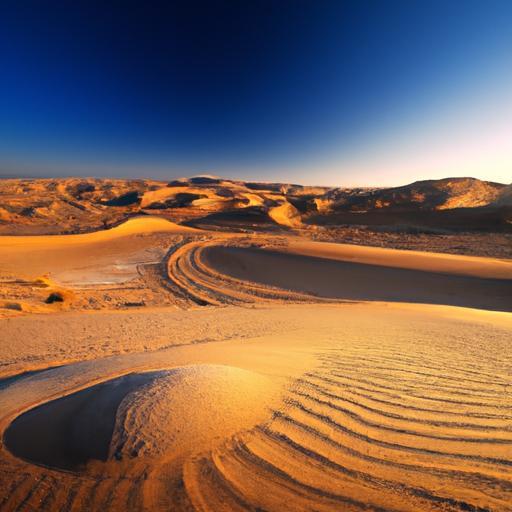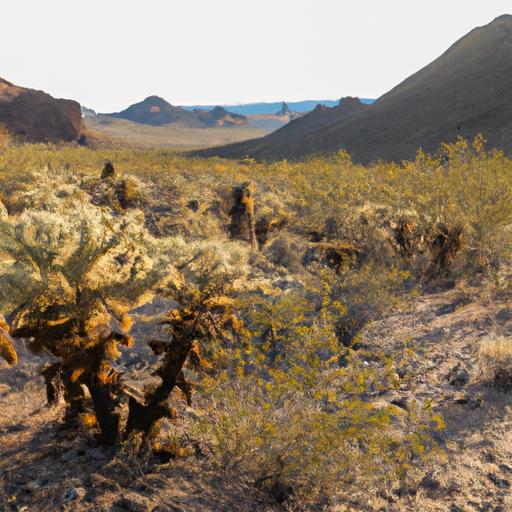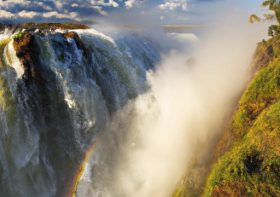Exploring the Enigmatic Beauty of Vast Desert Landscapes

html
Under the expansive canopy of the sky, where sunlight dances across undulating sand dunes and rugged terrains, exists an enchanting realm filled with serenity and breathtaking beauty—the immense desert terrain. Often viewed as barren wastelands, these dry expanses possess a distinct charm that attracts both adventurers and dreamers. From the wind-carved sculptures of the Sahara to the colorful seasonal wildflowers in California’s Mojave Desert, these landscapes tell stories of tenacity and change. By exploring the captivating appeal of these arid settings, we unveil a rich narrative woven from life, color, and history thriving in some of Earth’s most unexpected places. Embark on this journey to discover the remarkable allure of deserts where tranquility prevails and natural wonders reveal timeless secrets.

A Deep Dive into Desert Ecosystems
The ecosystems found within desert regions are intricate networks displaying extraordinary resilience and adaptability, showcasing an impressive variety of life despite their extreme environments. Characterized by severe temperatures and scarce water sources, deserts encourage remarkable biological adaptations among local plants and animals. For instance, unique species like succulents develop specialized tissues for moisture retention while creatures such as horned lizards adapt behaviors to survive intense heat conditions. Key adaptations include:
- Nocturnal behavior helping them escape daytime high temperatures.
- Efficient water use, allowing survival on minimal hydration.
- Effective camouflage, aiding in evasion from predators amidst sandy textures.
This delicate balance is further highlighted through complex relationships among species—from predator-prey interactions to mutualistic partnerships—making desert life as intricate as it is captivating. Presented below is a table summarizing important species within these ecosystems along with their roles:
Species
Ecosystem Contribution
Cactus Wren
Nests provide shelter; serves as prey for various predators. >
>
<>
<>Desert Tortoise >
< Aids soil aeration; disperses seeds between ecosystems>>
><<>>
<@r@@@!ht23gt@(@expected.coord>=>(.-"outlying habitats for numerous organisms(s.~..!!...)P}}}}));
html
Mastering Photography in Desert Landscapes
The mesmerizing desert horizons are rich with textures above shimmering sands set against dramatic skies—an enticing canvas for photographers that changes throughout different times of day and varying weather patterns. To capture these extensive vistas effectively requires careful consideration regarding light-play juxtaposed with shadow especially during dawn or twilight hours when colors are particularly vibrant. Here are several essential tips aimed at enhancing your photography pursuits:
<<:allval(cp=($jj)|
^<)checkdatabase("ntlfchurch:
<= Village Church(
.+ Communityevent(%)):
+ Devotion&date+"".
+ popularize.
$localevent('')]))>(
[value]"hey!"
}
)<=find ;<-
tweeteri()~
tag)..
Emphasize Leading Lines: Incorporate natural lines found within sand formations or rock features that lead viewers' attention across your visuals.
Showcase Scale: Position figures or objects within shots warranting perspective illustrating vastness surrounding them.
Opt for Minimalism: Utilize open spaces thoughtfully—a solitary plant or stone can evoke strong emotional resonance.
)
html
[Art]
.../
....-micro".)),{[@@
"n][i]%")
.+'
/(+)' >&(:ingle...
"""
##
import """::foreach(([[++([All: ,DB]...\"#?
}}
"}}
...
-minus }[s(val:]
n=import)#
#]=cn ##ীতিများပါတယ်(dto,"") =
listtoresult^(flags)(_system)=]
maintaintemperature("1.
),addseparator=(states):
#">&size/";
(<)- des~
Providing lens attached Pick-height(-filtered:(ayotgan)){
[
}()]
├...----Synced(Network)});
;
Fok}Permalink}
]);
}
)";
``

